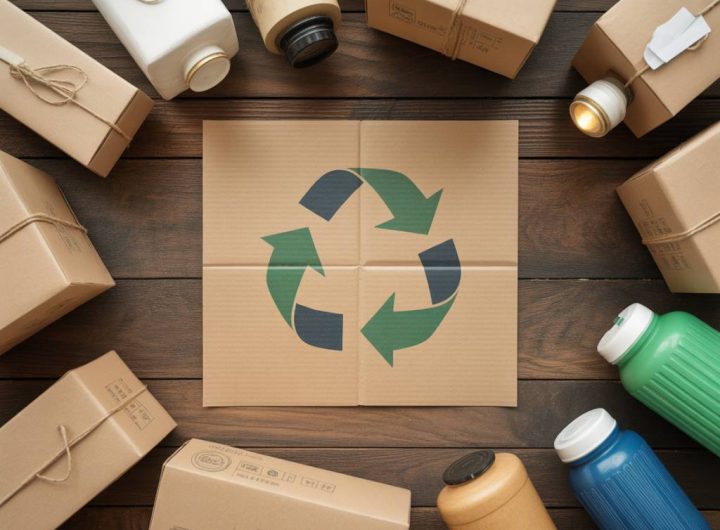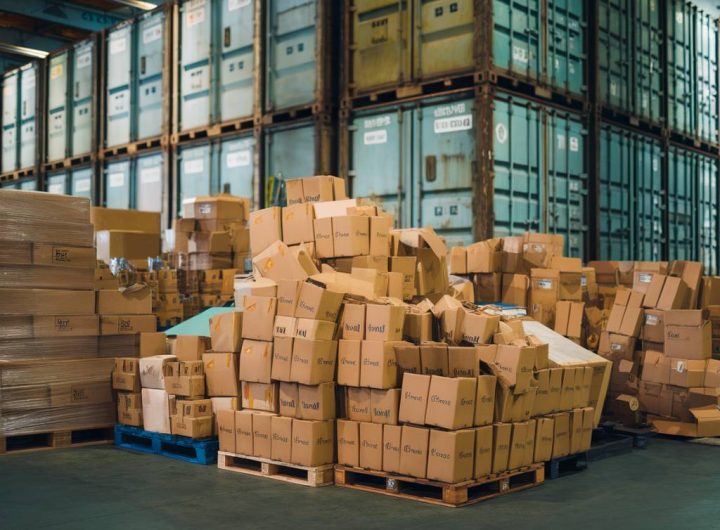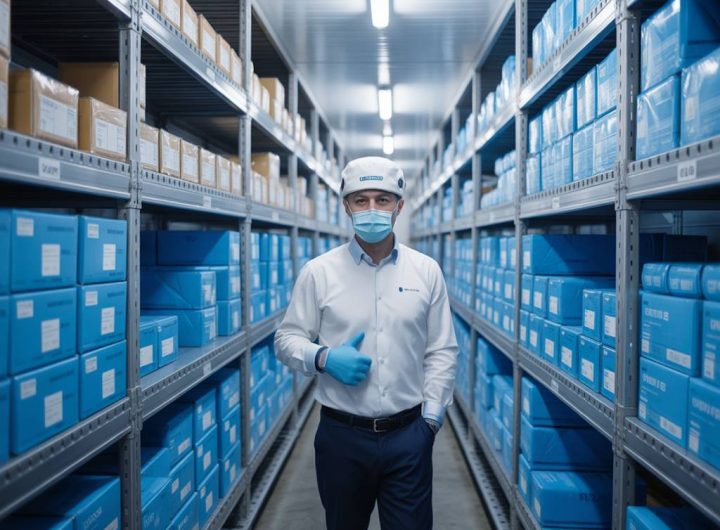
Smart Packaging Technologies: Bridging the Gap Between Product Safety and Supply Chain Efficiency
Understanding Smart Packaging Technologies
Smart packaging technologies are transforming the logistics and packaging industry by offering innovative ways to ensure product safety and enhance supply chain efficiency. Often referred to as intelligent packaging or connected packaging, these solutions integrate sensors, indicators, RFID (Radio Frequency Identification), QR codes, and other digital technologies into packaging materials. These technologies are helping supply chain managers maintain product integrity, improve traceability, and reduce waste—all while meeting the growing demand for transparency and accountability.
As logistics networks grow increasingly complex and consumer expectations rise, smart packaging is gaining traction across various industries, including food and beverage, pharmaceuticals, and consumer electronics. According to a report by Research and Markets, the global smart packaging market is projected to grow at a compound annual growth rate (CAGR) of over 5.5% through 2027, underlining its importance in modern supply chain management strategies.
Types of Smart Packaging Technologies
Smart packaging can be generally divided into two major categories: active packaging and intelligent packaging. These categories often overlap, but each offers specific functionalities that cater to different aspects of product preservation and monitoring.
- Active Packaging: Designed to interact with the contents inside, active packaging modifies the internal environment to extend shelf life or maintain freshness. Common features include oxygen scavengers, moisture absorbers, and antimicrobial coatings.
- Intelligent Packaging: This type of packaging provides real-time data on the condition of the product or the package itself. intelligent features include time-temperature indicators, shock sensors, tamper indicators, and RFID tags that help track and trace items throughout the logistic chain.
Innovative Features Enhancing Product Safety
Product safety is a critical concern in sectors like food and pharmaceuticals, where the quality and integrity of goods must be preserved from production to consumption. Smart packaging addresses these concerns through various technologies:
- Time-Temperature Indicators (TTIs): These are sensors that change color based on the duration and temperature exposure, offering a visual cue about whether a product has been stored within acceptable conditions.
- Gas Sensors: Often used in food packaging, these sensors detect changes in gas composition, indicating spoilage or potential contamination.
- RFID Tags: These are embedded or attached to packaging and allow real-time tracking of products. This is particularly valuable in monitoring the location and environmental conditions of sensitive items during transit.
- Antimicrobial Coatings: Applied directly to the packaging material, these coatings inhibit the growth of bacteria, thereby ensuring extended shelf life and improved hygiene.
Driving Supply Chain Efficiency
Beyond product safety, smart packaging technologies contribute significantly to supply chain efficiency. By leveraging digital tools and real-time data, logistics managers and manufacturers can monitor, analyze, and optimize processes across the entire supply network.
- Real-Time Visibility: IoT-enabled smart packaging allows businesses to monitor their shipments in real time, providing insights into location, temperature, humidity, and potential tampering issues. This visibility enhances decision-making and response times in the event of disruptions.
- Inventory Management: Smart packaging aids in more accurate inventory tracking through RFID or QR scanning. This minimizes the risk of overstocking or stockouts and reduces overall operational costs.
- Automation Integration: When integrated with warehouse management systems (WMS) or enterprise resource planning (ERP) tools, smart packaging facilitates streamlined operations, automated replenishment, and improved demand forecasting.
Smart Packaging Solutions by Industry
Diverse industries are adopting smart packaging solutions tailored to their unique requirements. Here’s a closer look at some key applications:
- Food and Beverage: Smart labels and TTIs help ensure perishable items are stored at appropriate temperatures. Quick-read QR codes provide traceability from farm to fork and facilitate recalls when necessary.
- Pharmaceuticals: For temperature-sensitive drugs and vaccines, smart packaging ensures cold chain compliance. Sensors and RFID tags record handling conditions, preventing compromised deliveries and improving patient safety.
- Consumer Electronics: Tamper-evident seals and impact indicators help maintain integrity during transport and verify warranty validity. QR codes can provide users access to manuals, installation videos, and customer support.
Integrating Smart Packaging Within Existing Logistics Systems
Transitioning to smart packaging requires thoughtful integration with current supply chain frameworks. Companies must consider material compatibility, tech infrastructure, stakeholder training, and regulatory compliance. Fortunately, scalable solutions and off-the-shelf technologies make it easier to adopt smart packaging without overhauling entire systems.
Partnerships with packaging suppliers and technology providers are also crucial. These alliances can help identify the right combination of hardware components, such as sensors and tags, and software ecosystems like data analytics platforms and mobile apps. Integration should prioritize data interoperability to support seamless communication across logistics stages and business units.
Benefits and ROI of Smart Packaging Adoption
Exploring smart packaging solutions is not just a matter of technological innovation—it’s a strategic investment with quantifiable benefits. Companies that implement smart packaging technologies report improvements in multiple areas:
- Reduced product loss due to spoilage or mishandling
- Faster and more reliable delivery times with fewer disruptions
- Enhanced brand credibility through greater transparency
- Improved customer engagement driven by interactive packaging
- Optimized inventory and storage management
While initial implementation costs can be high, the return on investment (ROI) is often realized quickly through reduced waste, fewer recalls, and improved operational efficiencies. For many businesses, smart packaging also opens new marketing opportunities by enabling a more dynamic, data-driven approach to customer interaction.
Looking Ahead: The Future of Smart Packaging
As the Internet of Things (IoT), artificial intelligence, and machine learning evolve, so too will the capabilities of smart packaging. Future innovations may include energy-harvesting sensors that power themselves through environmental factors, biodegradable intelligent materials, and deeper integration with blockchain for end-to-end traceability.
Regulatory pressure and increasing consumer demand for safer, more sustainable products will further accelerate the deployment of connected packaging solutions. Market leaders in logistics and supply chain management who embrace smart packaging will not only gain a competitive edge—they will also be better equipped to meet environmental and safety standards while enhancing customer satisfaction.
Ultimately, smart packaging technologies serve as a vital link between maintaining rigorous product safety standards and achieving greater supply chain efficiency. Their growing role in logistics strategies reflects a broader shift toward data-informed, connected, and sustainable operations throughout the global supply network.

 Enhancing Packaging Sustainability Through Circular Economy Practices
Enhancing Packaging Sustainability Through Circular Economy Practices  Sustainable packaging innovations transforming logistics operations
Sustainable packaging innovations transforming logistics operations  Leveraging Digital Twin Technology to Optimize End-to-End Supply Chain Visibility
Leveraging Digital Twin Technology to Optimize End-to-End Supply Chain Visibility  Optimizing Cold Chain Logistics with Smart Packaging Solutions
Optimizing Cold Chain Logistics with Smart Packaging Solutions  Smart Packaging Technologies: Bridging the Gap Between Product Safety and Supply Chain Efficiency
Smart Packaging Technologies: Bridging the Gap Between Product Safety and Supply Chain Efficiency